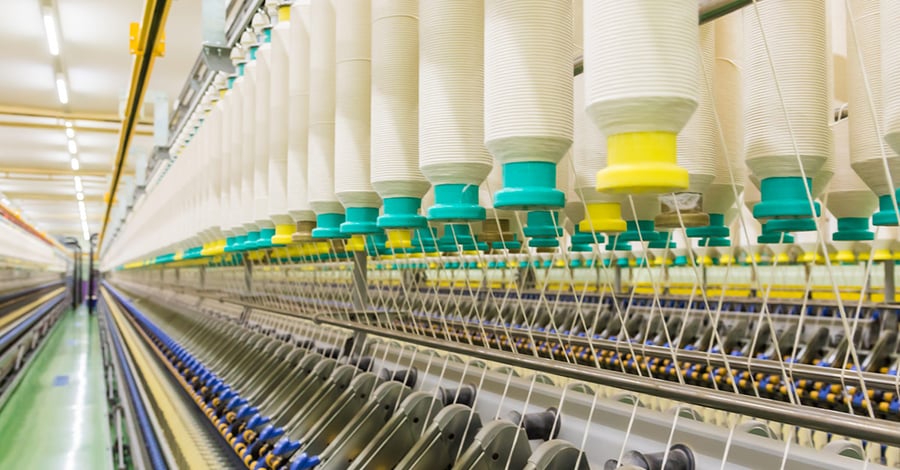
Spinning Efficiency: Maximizing Productivity with Textile ERP Solutions
Published :

In the intricate world of textile manufacturing, every thread counts. From the initial stages of yarn production to the final weaving of fabric, efficiency is paramount for success. Among the numerous tools at the disposal of textile manufacturers, the Enterprise Resource Planning (ERP) system stands out as a game-changer, particularly in optimizing spinning efficiency. Let's delve into how textile ERP solutions are revolutionizing the spinning process, maximizing productivity, and ensuring profitability in textile manufacturing.
Spinning, the process of converting raw fibers into yarn, is a pivotal function in textile manufacturing. Spinning efficiency refers to the ability to produce high-quality yarn with minimal waste generation and downtime. Factors such as machine utilization, raw material optimization, labor efficiency, and production planning significantly influence spinning efficiency.
Traditionally, textile manufacturers grapple with several challenges in optimizing spinning efficiency:
An ideal ERP solution offers a comprehensive suite of tools to address these challenges and enhance spinning efficiency:
Get visibility across the entire supply chain, from raw material procurement to yarn production. Through this integration, textile ERP enables efficient inventory management and reduces lead times.
Textile ERP software offers real-time monitoring of machine performance, production output, and quality metrics through 3rd party integration (like weighbridge, HVI, USTER, and CASCADE integrations). Advanced analytics capabilities help identify inefficiencies and opportunities for improvement in efficiency and qualify.
Textile ERP systems facilitate optimized production planning and scheduling by considering factors such as machine capacity, raw material availability, and customer demand. This is often achieved through a dedicated feature called Spin Plan or Spindle Plan. This comprehensive approach ensures efficient resource utilization, minimizing downtime and maximizing production output.
Improve quality through integrated quality management modules present in textile ERP software. These modules track yarn quality at every stage of the spinning process, allowing for prompt identification and correction of any issues. This proactive approach, often aided by features like "Deviation Alert Emails," minimizes rework and ensures consistent yarn quality, ultimately boosting customer satisfaction.
Manufacturers get access to real-time insights into production costs upon using textile ERP. This transparency enables them to identify areas for cost savings and optimize resource allocation. Features like "Cost Analysis" for every inquiry provide accurate estimations, while functionalities like "Cost vs. Actual Comparison" reveal variances between projected and actual costs. This comprehensive cost management approach helps manufacturers make informed decisions and improve profitability.
Implementing textile ERP solutions in spinning operations yields several benefits:
The textile industry is increasingly adopting Cloud ERP solutions to streamline spinning operations and optimize efficiency. Unlike traditional on-premise systems, a Cloud ERP system provides real-time access to critical production data, ensuring seamless coordination between inventory management, production planning, and quality control.
One of the biggest advantages of Cloud ERP solutions in spinning operations is their ability to integrate with modern textile technologies such as IoT-enabled machinery, automated weighbridges, and advanced quality monitoring tools like HVI and USTER. This integration allows manufacturers to monitor machine performance, predict maintenance needs, and minimize downtime—key factors in maintaining optimal spinning efficiency.
Additionally, a Cloud ERP system offers enhanced scalability and flexibility. Spinning mills can easily adjust their production schedules based on demand forecasts, optimize raw material procurement, and automate stock replenishment. The centralized nature of Cloud ERP solutions ensures that all departments, from procurement to production and sales, work with synchronized data, reducing inefficiencies and errors.
With built-in analytics and reporting features, ERP solutions empower decision-makers with actionable insights. Whether it's tracking spindle utilization rates, analyzing production costs, or improving labor efficiency, a robust ERP system helps textile manufacturers make data-driven decisions that enhance productivity and profitability.
By implementing Cloud ERP solutions, textile businesses can gain a competitive edge, ensuring consistent yarn quality, optimized resource utilization, and cost-effective operations in an increasingly dynamic market.
Super Sales India Limited (SSIL) Textile division, a leading textile manufacturer, implemented a textile ERP system to optimize spinning efficiency. By integrating production planning, inventory management, and quality control processes, SSIL achieved a 20% increase in spinning productivity and a 15% reduction in production costs within the first year of implementation. Real-time monitoring and analytics capabilities enabled proactive decision-making, further enhancing operational efficiency and competitiveness.
In the competitive landscape of textile manufacturing, spinning efficiency is the cornerstone of success. ERP solutions offer a comprehensive approach to maximizing productivity, optimizing resource utilization, and ensuring quality in the spinning process. By harnessing the power of textile ERP, textile manufacturers can gain a crucial efficiency edge, ensuring they consistently meet customer demands and achieve sustainable growth in the ever-evolving textile industry.

All Rights Reserved. © Copyright 2024. Ramco Systems.